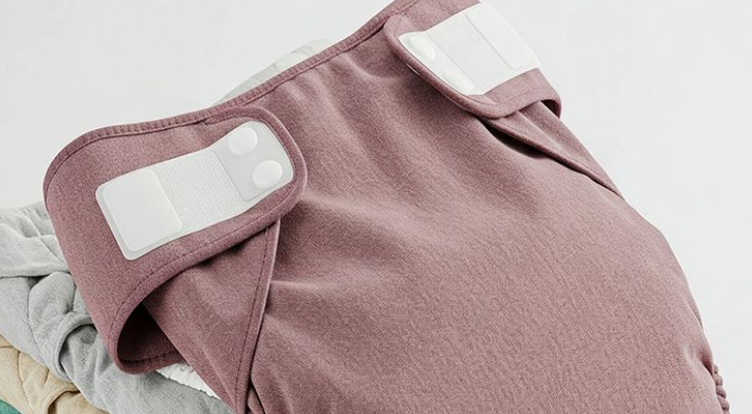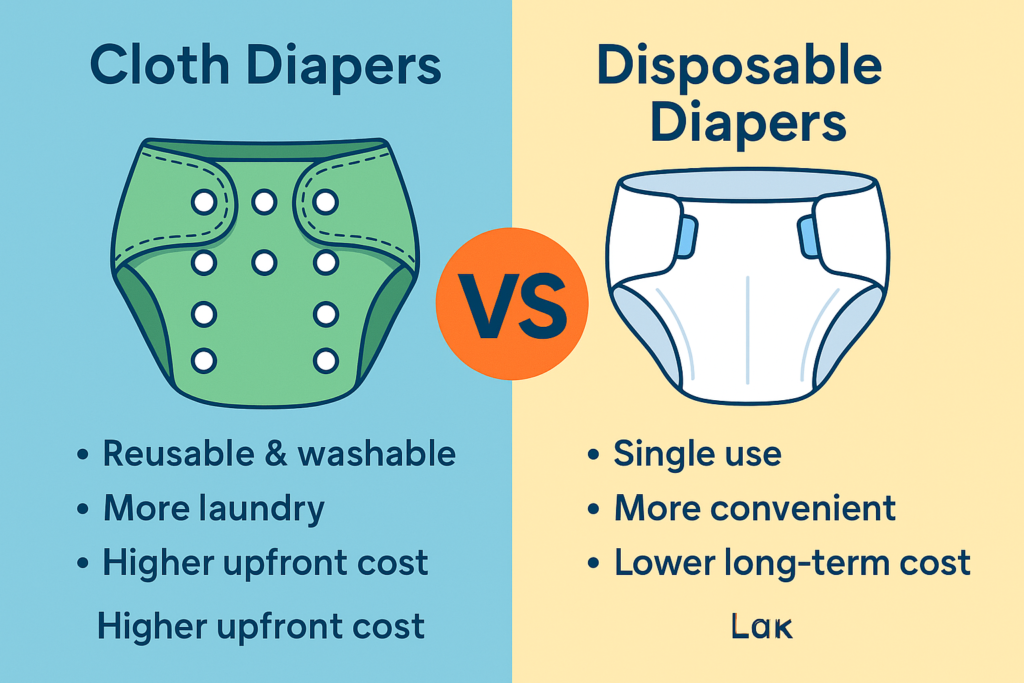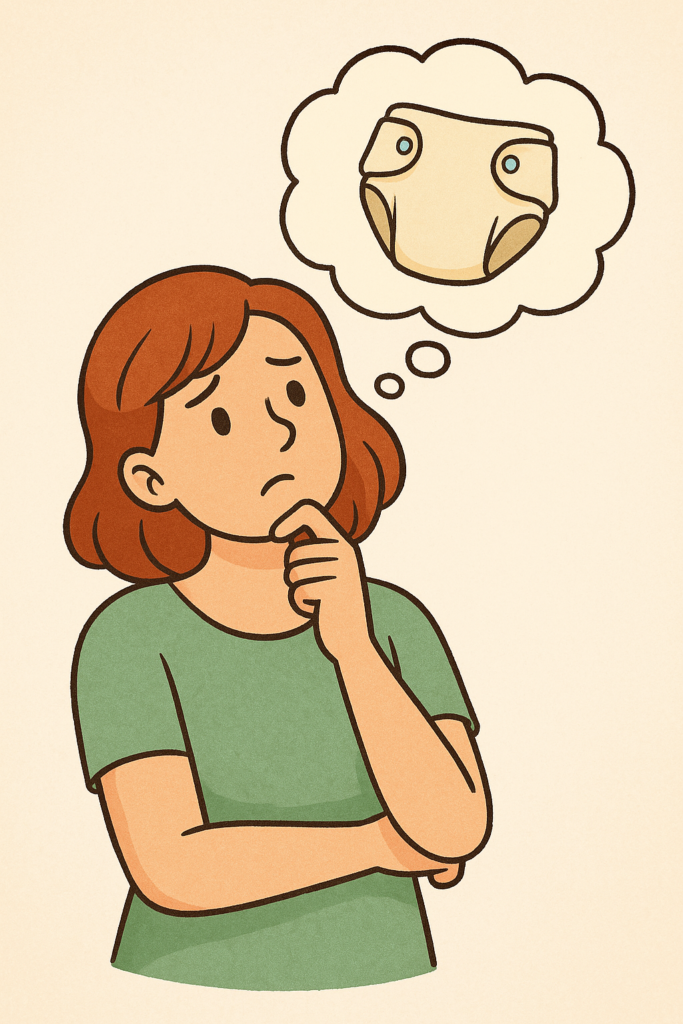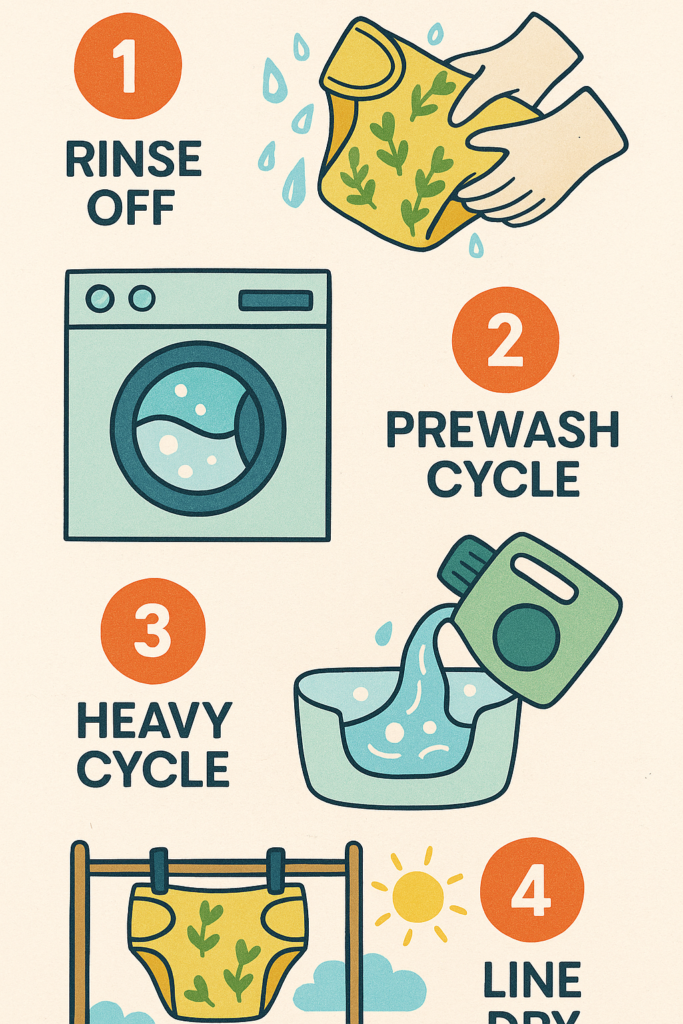Table of Contents
Cloth or disposable? It’s one of the first choices new parents face. Cloth diapers have grown in popularity, but are they right for you?
This guide helps you decide by weighing what matters most: cost, ease, your baby’s comfort, and your daily routine.

What’s the Real Difference Between Cloth and Disposable Diapers?
Disposables are convenient—use and toss. Cloth diapers are reusable and require washing, but offer long-term savings and reduce waste.
Key differences:
Cost: Disposables cost more over time; cloth has higher upfront cost but can save $1,000+
Convenience: Disposables are easier for travel and daycare
Waste: Cloth creates far less landfill waste
Materials: Cloth avoids chemicals and fragrances found in some disposables
👉 Use what fits your life—many parents combine both.

Why Parents Choose Cloth Diapers
Families often choose cloth because:
It saves money, especially with multiple children
It reduces household waste
It’s gentler on sensitive skin
It offers cute styles and better fit customization
When Cloth Might Not Be Ideal
Cloth diapers aren’t the perfect fit for every family—and that’s totally okay. They do take a bit more time and effort. You’ll need to wash them every couple of days, have enough space to store and dry them, and get used to how they work at first. If you rely on shared laundry, travel frequently, or your daycare doesn’t allow cloth diapers, it might feel like more hassle than it’s worth.
How to Decide if Cloth Diapers Fit You

Ask yourself:
Am I okay with extra laundry?
Do I want to reduce long-term diaper costs?
Do I value reusable over disposable?
Am I open to trying something new?
If yes to most—you’re a good fit.
What You’ll Need to Start (Basics Only)
No need to go all-in. Start small:
6–10 diapers (All-in-Ones or pocket style are easiest)
1–2 wet bags
Cloth-safe detergent
Simple routine: rinse, wash, rinse, dry
Optional: liners (for easier cleanup), boosters (for night), cloth wipes
A cloth diaper includes:
Inner layer – soft fabric against baby’s skin
Absorbent insert – soaks moisture
Waterproof cover – prevents leaks
How to Wash Cloth Diapers

It’s not hard, just routine:
Cold rinse (no detergent)
Hot wash with cloth-safe detergent
Optional rinse
Line-dry in sun or tumble-dry low
Remove solids before washing (liners help!). Don’t overload your machine.
Helpful Tips for Getting Started
Starting cloth diapering may feel unfamiliar at first, but it quickly becomes part of your daily rhythm. One of the simplest things you can do is line-dry your diapers in sunlight—the sun naturally removes stains and helps disinfect without chemicals. If you’re just getting started, it’s smart to test a couple of different diaper styles before committing to a full stash, since fit and comfort can vary from baby to baby.
It’s also perfectly fine to keep a small pack of disposables on hand for travel, illness, or times when convenience is essential. Many cloth diapering parents find that reusable cloth wipes are a helpful addition—they’re gentle on your baby’s skin and easy to wash alongside your diapers. And if you ever feel unsure, online cloth diapering communities are full of helpful advice, real-life experience, and encouragement from other parents who’ve been there.
Final Thought
Cloth diapering isn’t all-or-nothing. Many parents use both. What matters is what works for your baby—and your life.
If you’re curious, try a few. You may love the results more than you expect.

